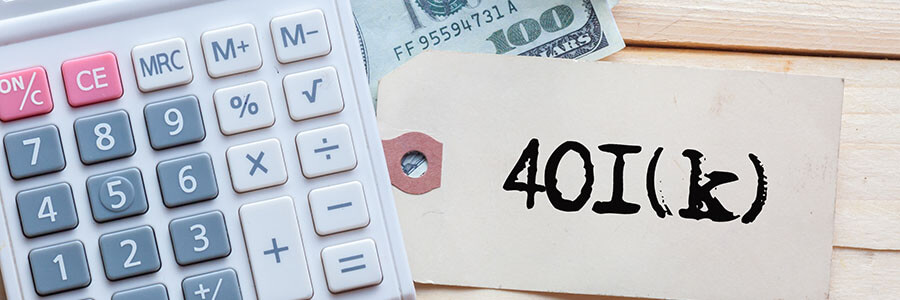DOL’s New Rules for 401(k)s and Group Health Plans: What Brokers and Their Clients Should Know

Quick look: Compliance changes over the past few years have moved at a frenetic pace. And just when business leaders feel like they have a chance to catch their breath, new regulations arise. The Department of Labor (DOL) has updated rules regarding employer-sponsored healthcare and 401(k) plans starting in 2023 and continuing over the next few years. Here’s a look at what employers can expect and how brokers can help to ease the transition.
As part of the bi-annual U.S. Regulatory Agenda, the DOL has made notable changes to the Employee Retirement Income Security Act of 1974 (ERISA), as well as group health plans. Though submitted last fall, these new rulings officially went into effect at the beginning of the year.
ERISA is the federal law setting minimum standards for employer-sponsored retirement and health plans to protect plan participants. In 2023, SECURE 2.0 amends ERISA to expand coverage and increase retirement savings for Americans. Benefits of the updated legislation are designed to give people more access to their retirement savings through automatic enrollment and provide greater transparency regarding 401(k) performance.
Key provisions also include mandatory distributions, part-time worker enrollment, and student loan matching, among other updates. Though the language may be complex, the sentiment is largely favorable. As a professional employer organization (PEO) broker helping small- and medium-sized business (SMB) clients plan for the future, here’s a shortlist of highlights which are important to know.
Automatic enrollment
In an effort to improve participant engagement for retirement plans, SECURE 2.0 requires businesses to automatically enroll employees in 401(k) plans. This stipulation takes effect starting January 1, 2025, unless the employee chooses to opt out. Per the ruling, employees will contribute a minimum of 3% with an increased 1% contribution every year until it reaches 10%, though not to exceed 15%. However, SMBs with 10 or fewer employees or new businesses operating less than three years are exempt.
Saver’s match
SECURE 2.0 also changes the section of ERISA which issued a nonrefundable credit for certain individuals making contributions to their retirement accounts. Beginning in 2026, employees who earn less than $71,000 annually will receive a 50% match up to $2,000 in employee cash contributions, meaning the government will provide a maximum amount of $1,000 to be directly deposited into an employee’s retirement account.
Emergency savings
Many Americans believe retirement savings are outside their reach. Per the Federal Reserve, nearly half report struggling to cover a (hypothetical) unexpected $400 expense. To provide relief, rather than immediately being forced to tap into retirement savings, employers may now offer lower-paid employees a savings account linked to their 401(k)s. Employers can automatically contribute up to 3% of the employees salary, with a cap of $2,500, before the remaining contributions are automatically routed to their retirement account.
Withdrawal access
In addition to creating accessibility to emergency savings, legislation now allows for one 401(k) withdrawal, free of penalties, up to $1,000 to cover emergency expenses. If the amount is repaid, this provision is available one time per year. However, if the money is not paid back, another emergency withdrawal cannot be made for three years.
Coverage for part-time employees
As part of the updated rules, employers are required to provide a 401(k) plan with dual eligibility to include part-time employees. Eligibility covers those who complete either one year of service with at least 1,000 hours of work fulfilled or three consecutive years of service (where the employee completes at least 500 hours of service). Additionally, employer-sponsored 401(k) plan eligibility is reduced from three years to two.
Nondiscrimination requirements
The DOL has also outlined rulings for group health plans covering nondiscrimination requirements. The current rules implement Section 108 of the No Surprises Act which affects changes made by the Affordable Care Act. It states “health plans offering coverage shall not discriminate with respect to participation under the plan against any health care provider who is acting within the scope of that provider’s license or certification under applicable state law.” The primary goal is to prevent “surprise” medical bills and protect patients by providing the medical care they need without being subject to arbitrary rates.
Mental health parity
Meanwhile, the Consolidated Appropriations Act (CAA) eliminates the opt-out from Mental Health Parity and Addiction Equity Act (MHPAEA) compliance for self-insured, non-federal government health plans. The MHPAEA requires group health plans and health insurers providing mental health and substance use disorder benefits to provide the same level of benefits as provided for medical and surgical care.
The PEO broker advantage
With many DOL rules having already taken effect, brokers play an important part in helping SMB leaders plan and adapt as the roll out continues. With 97% of employers focused on offering financial wellness, it’s a good time to refresh internal policies to ensure government rulings are upheld and responsibilities to employees are met.
Fortunately, as a PEO broker, there’s increased access to expertise and resources to keep SMB clients in compliance. Successful adaptation starts with a profound understanding and implementation of policy education, consistent communication, and improved digitization.
Education and communication
401(k) plans are a common offering by most employers, but employees aren’t always aware they have access to these benefits or don’t feel they can participate. Employee engagement requires an education and communication strategy to provide answers to frequently asked questions and eliminate myths about retirement savings.
This begins during employee onboarding, especially for first-time participants, and extends into offering immediate access to experts who can answer specific 401(k) questions. By working with ExtensisHR, PEO brokers can present this personalized level of support with tailored benefit plans to make a competitive impact.
Implementation through digitization
Not only must employers meet employee demand in a fast-moving industry, they must also be compliant with changing legislation. An employee’s 401(k) contribution strategy typically changes over the course of the career, and businesses should be prepared to help them maximize their benefits.
To implement a seamless transition and proactive implementation, digital technology has become crucial. ExtensisHR provides remote-friendly HR solutions, including benefit administration, making it easier to update records, streamline 401(k) contributions, and adjust to regulatory changes.
SECURE 2.0 impacts financial wellness benefits in the workplace by offering relief for millions of plan participants who want to plan for their financial future. PEO brokers maintain the competitive edge by working with a team of HR experts well-versed in risk and compliance management as part of a comprehensive suite of HR and benefit services.
We are here to support brokers and their SMB partnerships. Learn how our HR services can complement your efforts and help strengthen your portfolio. Contact ExtensisHR today.



